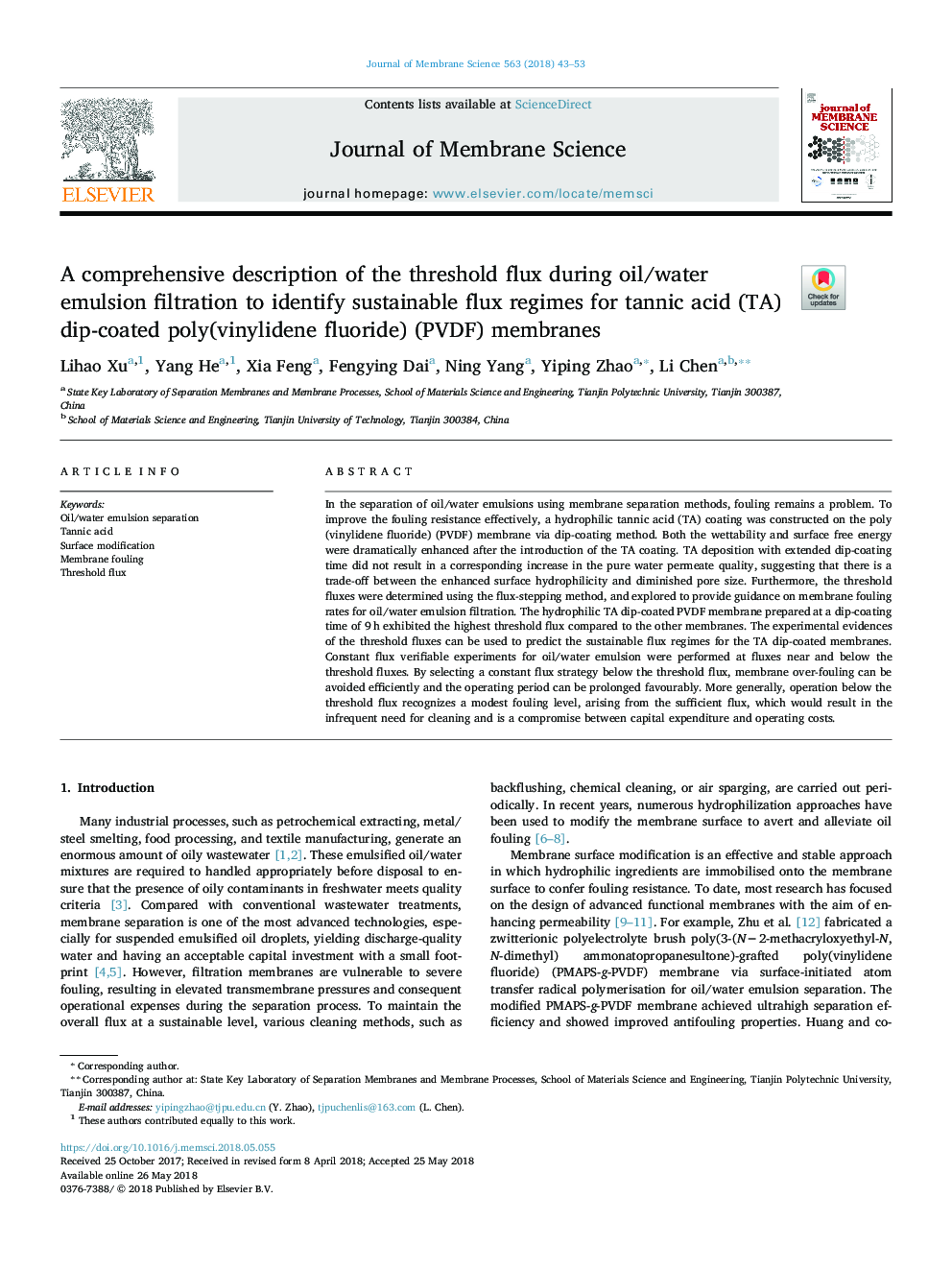| Article ID | Journal | Published Year | Pages | File Type |
|---|---|---|---|---|
| 7019668 | Journal of Membrane Science | 2018 | 11 Pages |
Abstract
In the separation of oil/water emulsions using membrane separation methods, fouling remains a problem. To improve the fouling resistance effectively, a hydrophilic tannic acid (TA) coating was constructed on the poly(vinylidene fluoride) (PVDF) membrane via dip-coating method. Both the wettability and surface free energy were dramatically enhanced after the introduction of the TA coating. TA deposition with extended dip-coating time did not result in a corresponding increase in the pure water permeate quality, suggesting that there is a trade-off between the enhanced surface hydrophilicity and diminished pore size. Furthermore, the threshold fluxes were determined using the flux-stepping method, and explored to provide guidance on membrane fouling rates for oil/water emulsion filtration. The hydrophilic TA dip-coated PVDF membrane prepared at a dip-coating time of 9â¯h exhibited the highest threshold flux compared to the other membranes. The experimental evidences of the threshold fluxes can be used to predict the sustainable flux regimes for the TA dip-coated membranes. Constant flux verifiable experiments for oil/water emulsion were performed at fluxes near and below the threshold fluxes. By selecting a constant flux strategy below the threshold flux, membrane over-fouling can be avoided efficiently and the operating period can be prolonged favourably. More generally, operation below the threshold flux recognizes a modest fouling level, arising from the sufficient flux, which would result in the infrequent need for cleaning and is a compromise between capital expenditure and operating costs.
Related Topics
Physical Sciences and Engineering
Chemical Engineering
Filtration and Separation
Authors
Lihao Xu, Yang He, Xia Feng, Fengying Dai, Ning Yang, Yiping Zhao, Li Chen,
